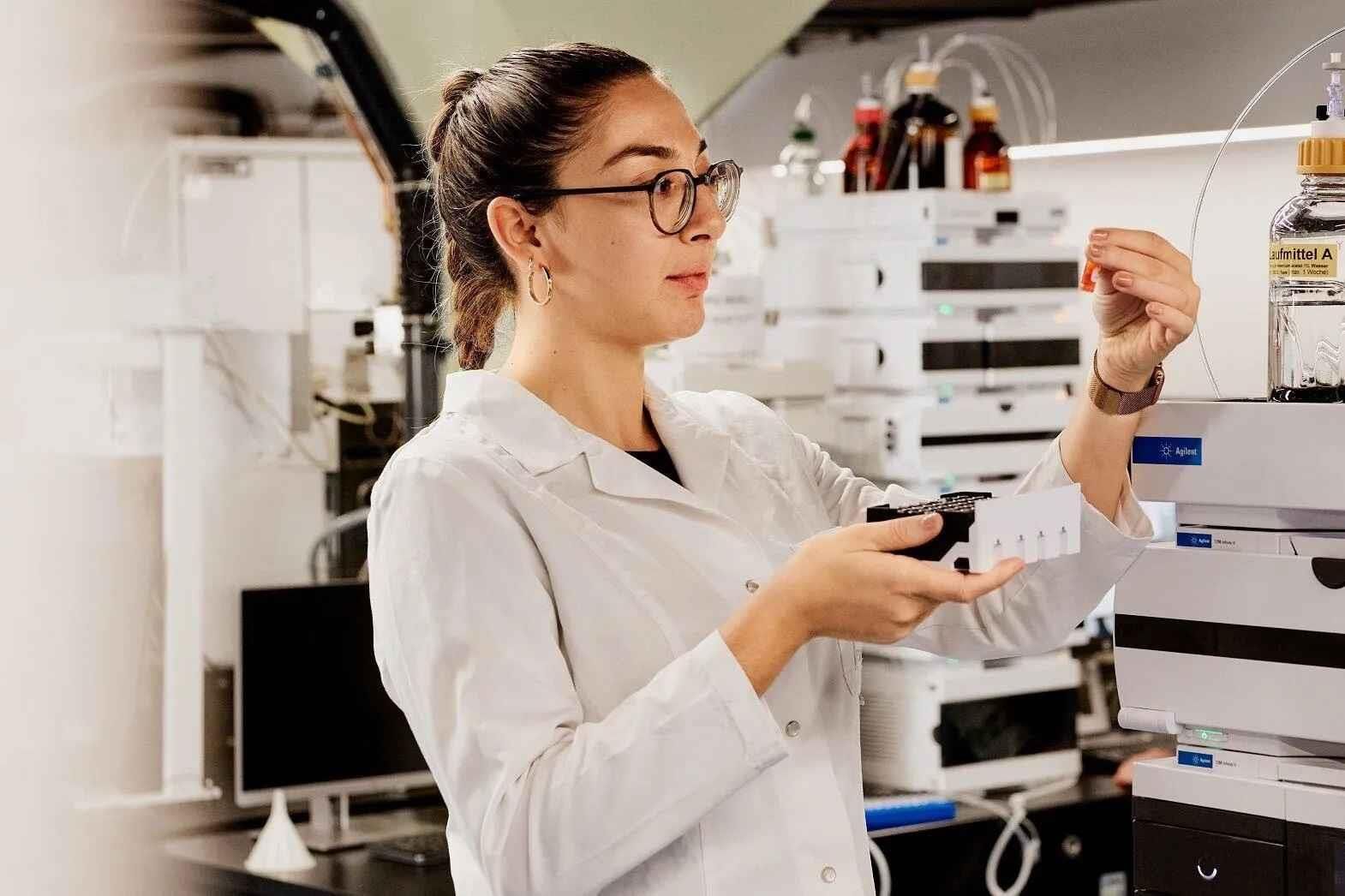To help guide the way, OEKO-TEX® ECO PASSPORT assists factories and chemical suppliers ensure that chemical products and their ingredients meet specific requirements for safety, sustainability and regulatory compliance. In just seven years, it has grown to cover nearly 27,000 chemical products meeting the strict criteria for ecologically responsible manufacturing. Brands and factories value ECO PASSPORT as credible third-party chemical validation and chemical suppliers use the built-in mechanism to improve products and processes.

Systemic, Data-Based Input Control and Greener Chemistry Improves Industry Performance.
To protect people and the planet, greener chemistry works to proactively remove hazardous substances before they enter supply chains. This is far more effective than rejecting unsafe finished goods or reversing environmental damage. However, greener chemistry requires transparent communication, worker training, careful monitoring, and storage. It means global monitoring of laws, restricted substance lists and suppliers. All of this is easier through collaboration, and respected initiatives and independent certification systems that update standards, harmonise across the industry, and verify through testing provide the tools suppliers and apparel and footwear producers need to act sustainably.
About OEKO-TEX® ECO PASSPORT
OEKO-TEX® ECO PASSPORT was introduced in 2016 to help suppliers select better chemicals, and prevent toxins and impurities from entering factories, products and ecosystems. ECO PASSPORT is an independent multistage testing and certification system for chemicals, colourants and auxiliaries used in the apparel, footwear and textile industries, and employs systemic screening and testing to promote compliance, confidence and cost efficiency.
For chemical suppliers, ECO PASSPORT certification provides validation of product stewardship and sustainable practices, a tool which builds client confidence. For textile and leather producers, the certification is a means to reliably control the environmental friendliness and safety of the substances used as early as the procurement stage, even before they are fed into the production process.
The Ins and Outs of Chemical Usage
As the saying goes, what goes in must come out. The chemicals and dyes used in apparel, footwear and textile production are not typically food grade quality, nor do they have pharmaceutical purity. Impurities and harmful substances found in textiles, leather, foams, adhesives, prints, metal items and other apparel, footwear and home goods components can adversely affect worker and consumer health. Moreover, if chemicals used in production do not remain in or on the product, they are released into the environment during manufacturing or consumer use, posing a further threat to humans and ecosystems.
One of the greatest challenges is not knowing how many single chemicals are entering facilities. It is estimated that 4,000 to 8,000 individual CAS number chemicals are being used, which does not even begin to cover the number of formulations.
Further Checkpoints: Traceability and Design Thinking
Supply chain traceability and metrics are crucial, but unfortunately, supply chain tracking for chemicals in apparel, footwear and textiles remains extremely limited. Without the right tools in place, brands and retailers risk exposing their customers to harmful chemicals. Tracing materials is also essential to sustainability efforts, such as recycling. Products designed with circularity in mind encourage the reuse of (scarce) raw materials, and reuse can mean less chemicals are utilised in the production process.
Needed at Every Stage: Systematic Controls
While product stewardship will always be necessary, a sole focus on the finished good is neither comprehensive nor efficient. Brands are beginning to take responsibility for their entire supply network.
Through the understanding and development of systems, better chemicals can be pulled through supply chains. The need for safer products (OUTPUT) means that factories will use safer chemicals (PROCESS), and chemical suppliers will produce safer, greener chemicals (INPUT). When the right levers are pulled in the “system”, the outcome is better all around.
Testing is a Must for Credible Certification.
Many chemical suppliers have robust systems and procedures for managing their dyestuffs and chemicals, but internal reviews can unintentionally miss the mark. A vigorous and reliable certification system requires both CAS number ingredient document checks and regular testing such as that fromOEKO-TEX® ECO PASSPORT.
The multistage verification process analyses whether chemical products and individual ingredients meet specific requirements for sustainability, safety, and statutory compliance, and requires CAS number screening and analytical verification (testing). As part of the traceable OEKO-TEX® system, ECO PASSPORT certified chemicals reduce risk and testing costs for downstream customers.
Test, Verify, and Test Again.
Testing chemicals is the only way to detect impurities, accidental or otherwise. Created by OEKO-TEX® member institutes, such as Hohenstein, which have been testing textile chemicals for decades, ECO PASSPORT’s reality-based testing matrix covers the critical substances for each chemical group and type and determines frequency of testing based on risk. Thus, higher risk substances are tested more often, less risky substances are spot checked, and others are only control tested. The matrix is adjusted each year based on thousands of test results. Since its launch in 2016, nearly 27,000 chemical products are now certified, and the certified chemical suppliers are easily accessible online in the free OEKO-TEX® Buying Guide.













Comments